For those of you who’ve seen the Jungle Book then you’re halfway there on this one. We’ve got snakes, bears and even tigers, but there’s also a few even nastier deadly animals to be found across the vast continent of Asia. Stretching from the deserts of the Middle East to the steamy jungles of South East Asia and reaching northwards to the Arctic Circle, there’s dangerous animals for all tastes.
When dealing with the developing world it’s nearly impossible to get anything approaching reliable statistics on animal attacks on deaths. If there were then we’d probably be writing about mosquitos (yawn!). Instead I’m going to concentrate on the meanest, scariest and most notorious of Asian animals. The one’s on this list are capable of dealing out some of the most unpleasant deaths known.
10. Komodo Dragon
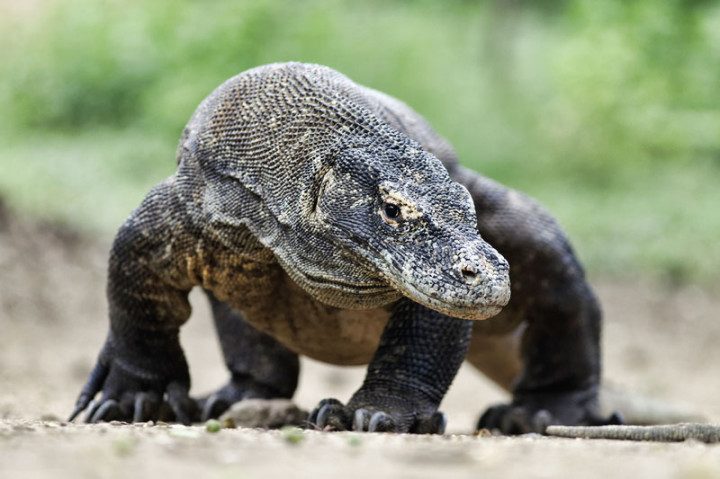
Komodo dragons are the biggest lizards in the world. The largest specimens measure over 10 feet (3m) in length and weigh around 350lbs (160kg). They are resident to several islands of the Indonesian archipelago where they are a protected species. Their diet basically consists of anything on the island. Having no natural predators is probably what has allowed them to evolve into the giants they are. Armed with strong claws, powerful jaws, razor sharp serrated teeth and armoured scales these are formidable beasts.
I used to quite like Komodo dragons but that was before I learnt about how they hunt. The Komodo will take prey as large as water buffalo, but they don’t use their size and power to do this. Instead they employ their secret weapon, a mouth full of bacteria.
The lizard only needs to bite its prey once, after which it can retreat to a safe distance and wait. This can go on for days with the Komodo following the infected, slowly dying animal like the shadow of death itself.
Komodo dragons have a host of other unsavoury habits including digging up human graves to eat the corpses. Over the years there have been a number of attacks on people, often with deadly consequences.
9. Fattail Scorpion
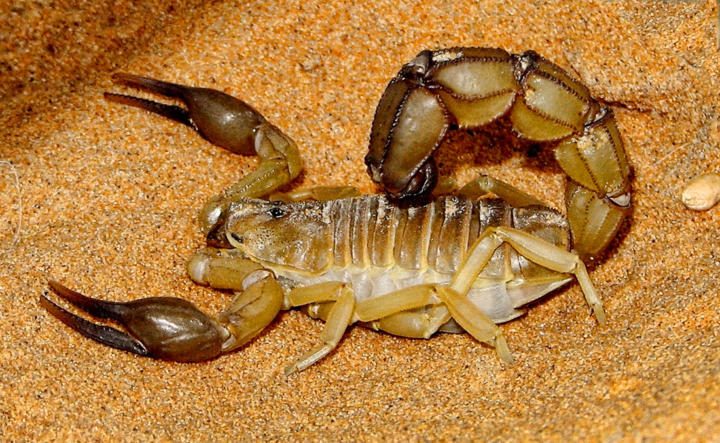
The fattail scorpion can be found in the hot, dry regions across Northern Africa, the Middle East and India. The name come from, well, its fat tail?!
Despite being modest in size (around 4ins / 10cm) they pack a lethal sting. They are widely considered to be the most dangerous species of scorpion and occasionally referred to as the man-killer. The venom of the fattail is a powerful neurotoxin which is particularly fast acting. Death can occur in as little as a matter of hours after being stung with respiratory paralysis being the cause. The only good news is there is an effective anti-venom.
8. Indian Rhinoceros
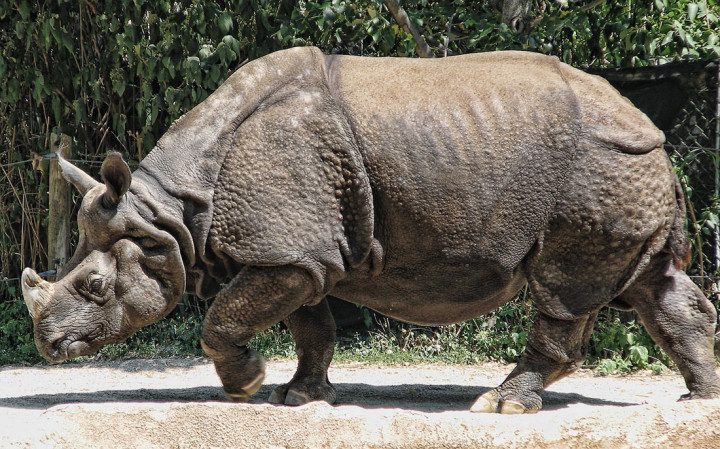
Rhinos are the tanks of the animal world. Big, heavy, powerful armor-plated and capable of inflicting big time damage. The Indian rhinoceros is no exception and is ranked as the 5th largest land animal on earth, just behind the various elephant species. A big male rhino can weigh in excess of 4 tons and measure over 6 feet (2 metres) at the shoulder. They aren’t slow either with a top speed of 35 mph (nearly 60km/h) and are surprisingly agile for such a big animal.
It is often said that rhinos are bad tempered and to some extent this is true. Having poor eyesight makes these animals more likely to charge first and ask questions later. Being hit by an Indian rhino would be like being hit by a truck, with a horn on the front! There is virtually nothing a rhino won’t have a go at; tigers, elephants and even trucks.
Sadly for the rhinos it is them who are in danger from humans. Their horn is considered valuable in the Chinese medicine trade where it is believed to help rheumatism. As a result they are now an endangered species with their numbers down to a few thousand individuals in northern India.
7. Sharks
All of the “big three” deadly shark species can be found in the waters of Asia; the great white, tiger shark and bull shark can all be found here. Despite this the number of attacks is relatively low with the official shark attack figures recording only 51 deaths since records began over 400 years ago. It is likely that the actual number of deaths is massively under-reported as there are many populated coastal areas where sharks are common.
Hong Kong tops the list and most of these attacks happened during a 4 year period in the early 1990s. Ten deaths were attributed to one or more tiger sharks in the waters of Sai Kung on the island’s east coast.
Another spot that has a surprisingly high number of shark attacks is Iran – it is the shark attack capital of the Middle East. This is likely due to the prevalence of bull sharks that can be found in the Tigris river and estuary – remember, these sharks can tolerate freshwater too.
The Philippines are home to all the world’s deadliest sharks. Tigers, bull sharks, makos and even great whites can all be found here. However, it was oceanic whitetips that were responsible for the greatest death toll from a shark attack in history. In 1945, the cruiser USS Indianapolis was torpedoed between Guam and the Philippines. The ship sank quickly but the vast majority of the crew survived and were left floating in the sea wearing life-jackets. At dawn the following morning the shark attacks began. By the time they were rescued 5 days later only 300 out of the original 900 survivors were alive. Most had been killed by sharks.
6. Asian Elephant
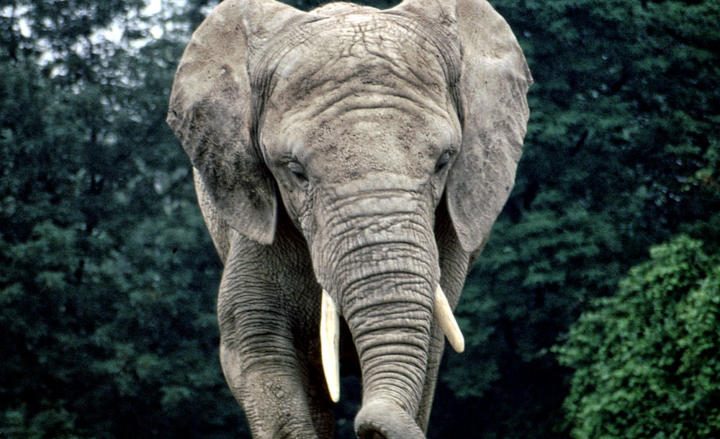
On size alone the Asian elephant wins hands down. Standing nearly 10 feet (3m) tall and weighing up to nearly 8 tons these are the second biggest animal on land. But hey, these are just big cuddly elephants that are our friends. Well yes, most of the time. Despite their enormous size elephants are generally shy and retiring by nature and will avoid confrontation with humans. There are however, two situations in which elephants are best left well alone; musth and when with their young.
In their prime, male elephants experience a seasonal hormonal change known as musth. When in musth a male elephant may have testosterone levels 60 times higher than normal. During this time the bull elephant can become highly aggressive towards everything from other elephants to inanimate objects, and humans.
Female elephants can also be highly dangerous when they feel their young are threatened. In such situations they will not hesitate in bringing their formidable size to bear and destroying whatever threatens it.
When attacking an Indian elephant will curl up its trunk and trample its victim using either its feet or knees (of which it has four!). Male elephants will also gore adversaries with their tusks.
There is another cause of elephant attacks – rogue elephants. These legendary beasts are relatively rare but very real. One such elephant was named Osama bin Laden by local villagers after it had killed 27 people during a six month killing spree in the Indian state of Assam. That elephant was eventually shot as was another elephant responsible for an even more macabre spate of deaths. This elephant is reported to have killed 14 people from a single village but the truly horrific thing is that analysis showed it had human flesh in its stomach. That’s right, a man-eating elephant. It is suggested that the animal had gone insane after the killing of its calf and this was a psychotic episode.
5. Crocodiles
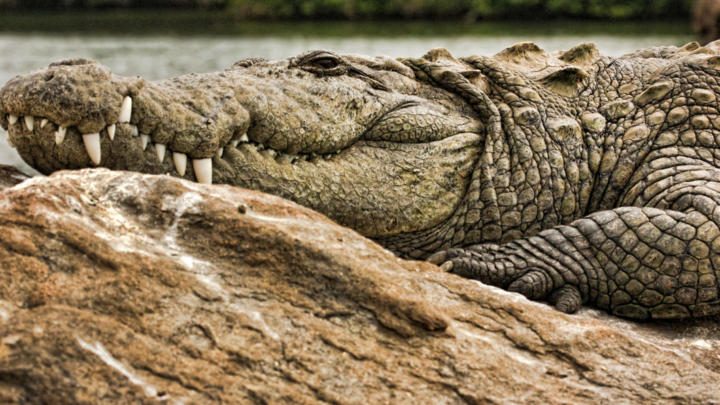
Asia is home to a variety of crocodiles from the improbable looking gharial up to the deadliest of all, the saltwater or estuarine crocodile. Just looking at the fellow above should leave you with no doubt that these are not an animal you want to mess with. These are the biggest reptiles on earth and haven’t had to change much since prehistoric times. Armour plated, surprisingly fast both in and out of water, and equipped with the most powerful bite of any living creature. Crocodiles have a recorded bite force ten times that of the great white shark. Crocs aren’t fussy eaters either they are opportunistic feeders meaning they will eat almost anything that comes their way.
The crocodile mode of hunting generally involves ambushing prey by waiting just below the surface or even out of the water. From here they strike with lightning speed clamping their jaws shut and dragging the victim into the water to drown. As the crocodiles teeth are designed for gripping, not slicing flesh, they have two methods of turning their prey into bite-size chunks. One is to hide the carcass and let it rot, the other is the infamous death roll where the croc rolls over and over with the prey, ripping chunks off.
In terms of which is the most dangerous the main contenders are the mugger crocodiles and the saltwater crocodile. The huge salty wins hands down in most respects and has even been known to take victims in the open ocean, hundreds of miles from land. Mugger crocodiles probably kill as many people though as they are found throughout India and Pakistan where they come into closer contact with humans.
4. Asian Giant Hornet
-

Asian giant hornet (Vespa mandarinia) Photo: Yasunori Koide / License
Also known as ‘yak killer’ hornets these super-sized wasps can measure over 2 inches (5 cm) in length and have a 1/4 inch (6mm) long sting. But it isn’t just their size that makes them dangerous. The venom of Asian giant hornet is also particularly potent containing a combination of cytotoxins and neurotoxins. The first of these will cause tissue damage and pain with one researcher describing the sensation as “like a hot nail being driven into my leg”.
The other toxin (mandaratoxin) can be lethal in high enough doses, and that’s not just if you’re allergic to wasp stings. In Japan alone 30 to 40 people a year are killed by giant hornet stings. That makes them Japan’s deadliest animal by a long way.
In China the story is similar with over 40 deaths in Shaanxi province in just three months. The official line here is if you get stung 10 or more times, seek medical help. If you get stung more than 30 times, you’re in big trouble.
3. Sloth Bear
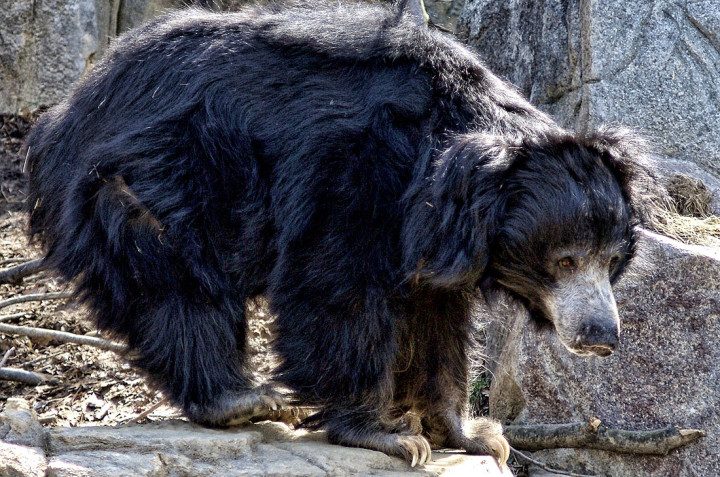
Despite having a slightly comical appearance, ungainly walk and a diet consisting largely of insects, the sloth bear is in fact one of the most feared animals in Asia. Many tigers will give them a wide berth, whilst elephants and rhinos actually actively dislike them and will charge them on sight.
Standing at around 6ft (2m) tall when upright, Sloth bears can weigh in at up to 420lbs (200kg) for a big male. They are armed with very long powerful, sickle shaped claws which they use for digging termite mounds up. It is these claws that make them the Freddy Krueger of the animal world.
With many animals there is a degree of predictability in their behavior and often some advice on what to do if confronted by one – not so for the sloth bear. These animals are as likely to attack as to run away. For some reason these animals seem to have a particular dislike of humans and it is reckoned that there is about one attack per week in India. It’s almost as if they hold a grudge for all the mistreatment such as being hunted and trained as dancing bears or even pets.
Of all the animals to be attacked by the sloth bear really is the last you want it to be. They are seriously vicious and can make a real mess with those scythe like claws and teeth. And the worst thing is they go for the face. It is no exaggeration to say sloth bears rip their victims faces off.
So far I’ve only talked about regular sloth bears. What about when sloth bears go psycho?! Well this is what apparently happened in Mysore, India in the 1940s. The Sloth bear of Mysore allegedly went on a murderous rampage killing at least 12 people and maiming dozens more. All the victims had their faces ripped apart with survivors losing lips, noses and / or eyes.
2. Bengal Tiger
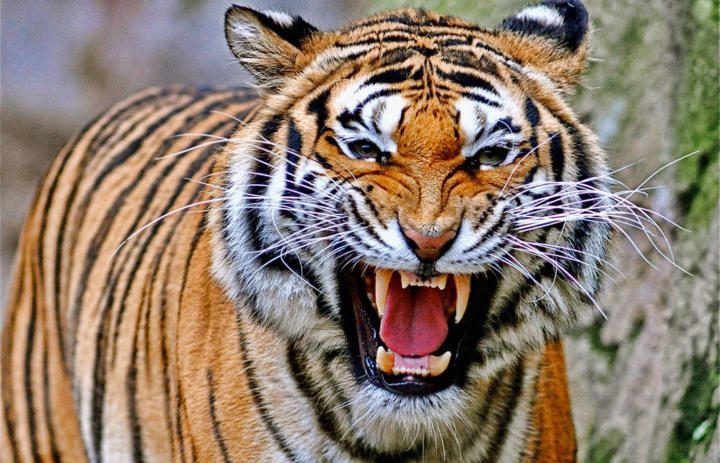
The tiger has long been revered as the ultimate man-eater. Stories from the days of Colonial India abound with villagers being slaughtered wholesale until a brave white hunter stepped in to shoot the beast. But how much truth is there in these tales and just how dangerous is the tiger?
Well, it seems that there is plenty of truth in the dangerous bit. The Bengal tiger is the biggest of the bunch weighing in at up to a massive 860 lb (390kg) and around 12 feet (3.9m) in length. And as you can see above, those teeth are pretty formidable, along with the matching set of claws. The usual hunting method of the tiger is to bring its victim down whilst latched onto the throat and thereby suffocate it. Prey can range in size from wild pigs right up to 1 ton buffalo. There are reports of tigers taking on several of the animals on this list, although they never seem to better elephants.
Obviously a human is no match for the true king of the jungle but as a rule tigers don’t think we’re worth the bother. Despite that tigers still hold the record for having killed more humans than any other wild mammal. During the 1900s it is estimated that tigers killed a thousand people a year in India alone. One individual tiger (the Tigress of Champawat) is said to have killed 430 people.
Whilst these numbers are much reduced in modern times there are still cases of man-eaters out there. The Sundarban mangroves between Bangladesh and Bengal are home to around 600 tigers. Around three deaths a year are still attributed to Bengal tigers here.
1. Snakes

Whilst Australia may be home to the most venomous snakes on earth there are only a handful of fatalities every year. The story is very different in Asia with estimates ranging between 15,000 and 60,000 deaths every year as a direct result of snakebites. Most of these deaths occur in India although Sri Lanka seems to be disproportionately effected by snake bite deaths.
The main culprits in India and South Asia are collectively known as the “Big Four”; Russell’s viper, saw-scaled viper, Indian cobra and the common krait. The cobras are the most common of these snakes and as a result responsible for the most deaths. The common cobra (Naja naja) has a highly potent neurotoxin which can cause death by tissue damage. The much larger King cobra (Ophiophagus hannah) is widespread throughout South East Asia and is in fact the biggest venomous snake in the world. Despite reaching nearly 18 ft (5.5m) and having a bite capable of killing an elephant the King cobra is not aggressive and will avoid humans. Of all the cobras the Egyptian cobra (Naja haje) is the most dangerous, being more aggressive and having a stronger venom.
In Thailand the majority of snakebite deaths are caused by the monocled cobra (Naja kaouthia).
The kraits are only found in Asia. They are nocturnal and not aggressive, however they have incredibly potent neurotoxic venom which can kill within 4 hours. Most encounters with humans are accidental with kraits seeking shelter in boots, tents or even getting into sleeping bags with people.
The largest group of dangerous snakes in Asia are the pit vipers – so called because of the heat sensitive pits between their eyes and nose. These are responsible for the majority of deaths in South Asia and Japan alike. Most notorious of all these is Russell’s viper which is responsible for more snakebite fatalities than any other snake. It is large, common, aggressive and packs a lethal does of haemotoxic venom. This may cause internal bleeding, necrosis, kidney failure and septicaemia amongst other things.
And whilst we are talking about snakes lets not forget the constrictors. Asia is home to the world’s longest snake, the reticulated python. Whilst you may think these aren’t dangerous as you can buy one at the local pet shop you’d be wrong. These 20ft (7m) plus monster serpents have been responsible for numerous deaths both in the wild and in captivity. Although more than capable of killing an adult human these pythons are actually incapable of swallowing their victim as an adult’s shoulders are too wide.


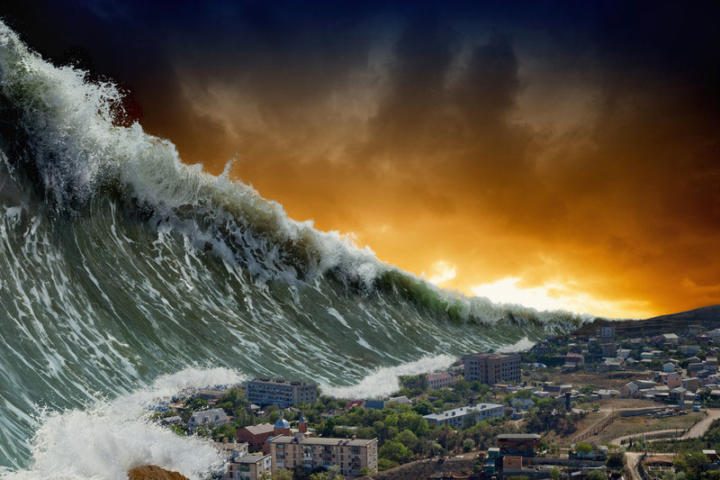
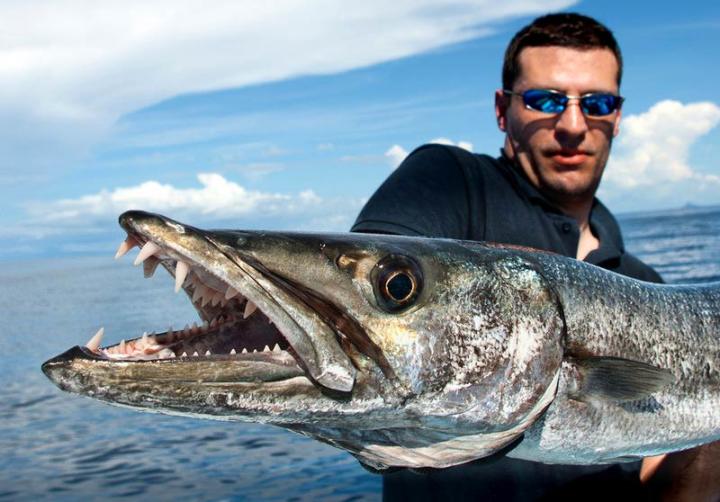
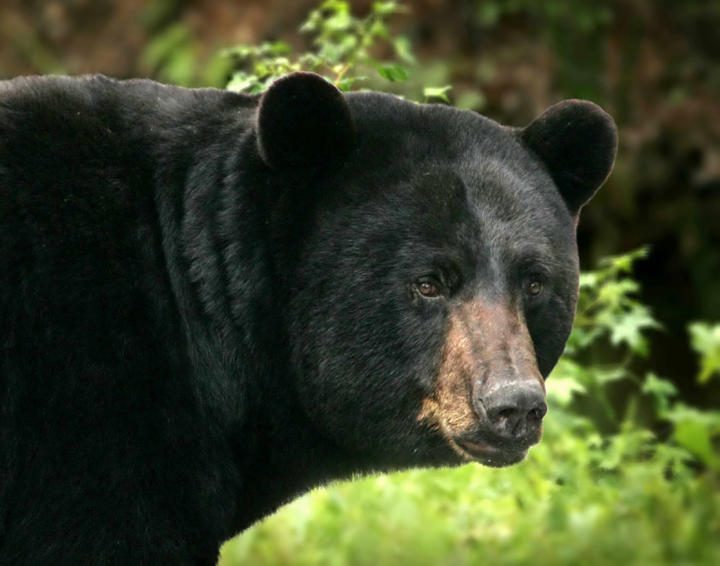
Many of them were from India, I fear that it’s my homeland and I live here.
me too one time my relatives house is came monkey they were saved by zoo security
I have heard that research shows that not only does the Komodo dragon have bacteria in its bite but may actually be venomous. https://news.nationalgeographic.com/news/2009/05/090518-komodo-dragon-venom.html
Bengal Tigers do not weigh up to 860 pounds. That would be a a very large Siberia tiger.
It is true that the Siberian (Amur) tiger is generally bigger than the Bengal. However, according to the he “Guinness Book of Animal Facts and Feats” a male Bengal tiger weighing 388.7 kg (857 lb) was shot in 1967. In fact the particular tiger is apparently on display in the Mammals Hall of the Smithsonian Institution
our indian bengal tiger most dangerous
They are all animals and are higher up in the hierarchy, so they eat all small animals. survival of the fittest.
I hate sharks
I hate you
so where does the sloth bear live?
India and Sri Lanka, mainly
in mysore india